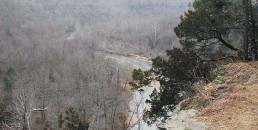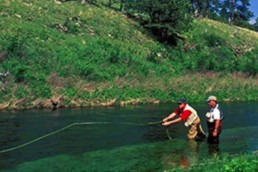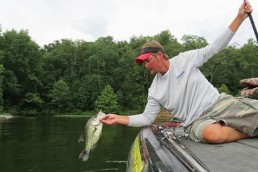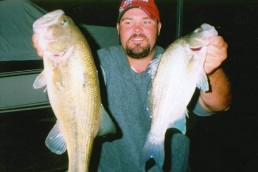The Ozarks, Black Powder and Venison Sausage
In the early-morning darkness with my favorite muzzleloader lying across my lap, I quietly settle into my ladder deer stand. It’s Sunday morning on December 19, 2010—muzzleloader season in the Missouri Ozarks. I’m hunting public ground, on the edge of the Ozarks National Scenic Riverways. My setup is a remote, steep, rugged Ozarks ridge. The Jacks Fork River is far below, and even in the cold still winter air, the soothing sound of the flowing water can be heard.
As dawn finally breaks, a new day ushers in sounds of life as a wild turkey gobble startles me. Then yelping and more gobbling as others join in this vocal battle. This flock ruckus will continue nonstop until well after 9 a.m.
My hunt in these hills is not your typical outdoor TV show deer hunt; this is not privately-managed land with high densities of deer in crop-rich northern Missouri or Iowa. Missing are pre-scouted trail camera bucks on a hit list; missing are hundreds of acres of sponsor-paid, planted food plots.
The standing corn, standing beans, clover, deer cocaine, magic corn and super antler grow poured in a stump are all missing. So is the pre-hunt crew videotaping deer movement prior to my arrival and a dozen preset treestands and a dozen brushed in-ground blinds set in place.
I’ve carefully selected this stand setup high on a very steep ridge close to its narrow end, just above an acorn flat. My stand is in a slight saddle where the ridge narrows, a place that forces deer movement to pass my way. My original plan was to hunt from the ground as my ancestors before me, but I decided to use a ladder stand so I can see just over the rim of this ridge, the preferred travel route of the gray ghost river bucks.
With thousands of acres in the river hills and miles and miles of ridges, a hunter could easily second-guess a setup. But these sleek, heavily muscled, ridge-running acorn eaters have made the mistake of leaving evidence of gorging on these tree nuts, rebuilding strength after the grueling November rut. To me, this is real deer hunting. This is how I learned deer hunting as a small boy following Grandpa and my Dad in the Ozark hills in search of the elusive whitetail for our winter meat.
I have a rich tradition of hunting with muzzleloaders. I’ve hunted both whitetail and turkey with original black powder guns long before the replicas of the 1970s and the availability of today’s modern muzzleloaders.
Grandpa Wall was a gunsmith, muzzleloader collector and a black powder expert. Not only did my grandpa and my dad kill many deer with black powder, the two in the 1950s traveled throughout the Midwest to black powder rifle shooting matches.
Encyclopedia Britannica states “Ozark” as the name of a French trading post established in the region in the 1700s. Another source says that Osage Indians hunted with long bows made from the wood of a tree known to the French as “Bois d’arc,” known today as Osage orange.
The Osage and Shawnee Indians in the Ozarks once made the Current and Jacks Fork rivers and the valleys their home. An Osage chief named Cardareva is said to be buried on top of the mountain known as Cardareva Bluff.
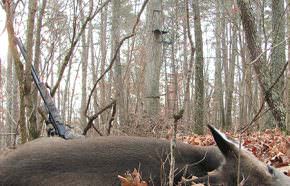
It was way back in 1912 when a group of hunters, trappers, and fishermen started a process that would eventually lead to the establishment of Ozark National Scenic Riverways and the protection of these beautiful Ozark rivers.
Many names in the Ozarks come from the early French explorers and trappers in the area. The trappers placed traps in “La Riviere Courant,” the “Running River.” According to local legend, the Jacks Fork River is named for a Shawnee Indian named Captain Jack who camped along the river with his tribe.
Troublesome Hollow got its name during the turbulent Civil War years. Lawless guerrillas, known as “bushwhackers,” used the hollow as a base to cause nearby settlers grief and trouble during an unsettled time.
Meeting House Cave also takes its name from the Civil War period. According to legend, the cave was used as a hideout during the war. Marauding bands from both sides of the conflict used the cave as a place to meet. Nearby Hospital Cave was supposedly used as a hospital during the war.
In 1933, large tracts of land were purchased in the region for the Clark National Forest, which today is part of Mark Twain National Forest. In 1936, the Missouri Department of Conservation was established and game laws became more rigidly enforced in the region.
Today, there is approximately 80,000 acres of rugged Ozark land along the Riverways and the riparian corridor through Shannon, Carter, Dent, and Texas counties in the southeastern Missouri Ozark Highland.
Around 7:30 a.m., as a great horned owl hoots along the river and a chorus of barred owls hoot just up the ridge, suddenly, I catch movement down the ridge just below the rocky rim. The sounds of hoofs on the rocky ledge remind me of Christmastime and Santa Cause as the first of eight deer come over the ridge top from the river below, bounding on the narrow ridge toward me.
I quickly adjust my gun for their approach as visions of whitetails weave in and out of the trees, quickly closing the distance. Leading the pack is a big gray doe. Suddenly, she abruptly stops in front of my stand and turns to face me, stomping the ground with her front hooves.
As she stares at my ladder stand, she notices something different—something that was not here just yesterday. Now, all the deer slide to a stop and stand very still. As my sights settle on her neck, I slowly squeeze the trigger. With the roar of the gun and a cloud of smoke, the big gray doe goes down in a heap.
I remain in my stand until after 9 a.m., just soaking it all in. I know I will have to leave this place of beauty and return to the real world, but for now I will enjoy my special time in my Ozarks with great friends, family, good food, fellowship, and pounds upon pounds of venison summer sausage, burger and back strap lying on the forest floor out in front of me.
Ray Eye is a MidWest Outdoors hunting instructor. He was raised in the turkey-rich hills of the Missouri Ozarks, and is considered the dean of America’s professional turkey hunters. It’s less widely known that he is an expert hunter for many other species. Eye has produced an online course, “Calling is Everything,” that details how to call turkeys at any season of the year. Find it at eyesontheoutdoors.com.
MWO
SHARE THIS POST
Did you enjoy this post?
You can be among the first to get the latest info on where to go, what to use and how to use it!
Ray Eye
Ray Eye is an award-winning outdoor communications giant. Eye has a huge following with writing, radio, television and national seminars. This Missouri native is a Missouri Conservation Communicator of the Year, NWTF national Communicator of the Year and was inducted into the “Legends of the Outdoors” National Hall of Fame.
